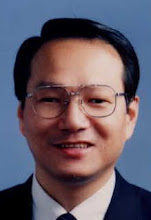「競爭優勢」來自「競爭優勢管理(Competitive Advantage Management; CAM)」。
許詩玉博士給競爭優勢下個定義。「競爭優勢」就是在某一特定的價值鍊之中,個人或組織所創造與保持的優異差異性(superior differentiation);其優異的差異性可以:(一)使其利益關係人(例如顧客、供應商、債權人、員工、投資人、以及/或者其他相關的個體)易於認定並接受其所提供的產品、服務、形象、以及/或者品牌名氣,並且(二)使其所提供的產品、服務、形象、以及/或者品牌名氣,能夠勝過其他競爭者所能提供的價值或貢獻。
許詩玉博士給競爭優勢管理下個定義。「競爭優勢管理」就是個人或組織經由領導統御藝術與經營管理科學等兩者的交相作用,在合於經濟原則與社會公平正義原則的基礎上,創造並保持多元的、強勁的、與持續的競爭優勢,以便:(一)比競爭者更善待其利益關係人、(二)為其利益關係人謀取更有意義的價值與做出更多的貢獻、(三)避免作為的錯誤(errors of commission)與不作為的錯誤(errors of omission)、以及(四)比其他個人或組織更善盡社會責任。
沒有卓越領導統御的藝術的起頭,固然難有優異經營管理的科學的應用;然而,若沒有領導統御的藝術與經營管理的科學兩者交相的作用,就沒有競爭優勢的產生。因此,個人或組織亟需競爭優勢管理。
競爭優勢的諸多來源係源自個人或組織所擁有各種資源:即內部的資源、外部的資源、以及整合的資源等。
人力、物力、財力、情報、以及時間等等皆為個人或組織有用的資源。資源的優點包括人員優點(people advantage)、實物優點(physical material advantage)、財務優點(financial advantage)、情報優點(information advantage)、時機優點(time-compressed advantage)、地域優點( regional advantage)、管理優點(management advantage)、協作優點(collaborative advantage)、複雜性優點(complexity advantage)、以及知識優點(knowledge advantage)等等。
資源(人、事、時、地、物、數、與質)各有其優點(advantages)與缺點(disadvantages),或者各有其強點(strengthes)與弱點(weaknesses)。
當企業具有有價值、極稀少、不易模仿、不可替代的核心資源及能力時,則表示其有這方面的優點。「優點不等於優勢」。優點經過多方的整合並通過市場競爭的考驗,才是競爭優勢。未通過市場競爭考驗的優勢,沒有資格被稱為競爭優勢;當然,也不能自詡為競爭優勢。
由於世人長久以來對競爭優勢沒有深入研究與了解,所以個人或組織一旦擁有某一資源的優點,在未經經營管理的系統運作成競爭優勢的種類之前,就隨心所欲稱其有競爭優勢,這顯然是錯誤的觀念和作為。(以上摘錄自許詩玉博士《功成名就利厚優勢學》)
劉呈顥先生 2009/2/24下午 1:09在其Google Blog (http://ethan0620.blogspot.com/2009/02/resource-beased-view.html)張貼:「學者Barney主張資源觀點的定義是,當企業具有有價值、極稀少、不易模仿、不可替代的核心資源及能力時,則該企業擁有持續的競爭優勢。有別于結構學派由外而內的策略思考邏輯,資源基礎觀點強調由內而外的策略思考,專注于創造、發展、累積、應用企業自身的核心資源和能力,配合策略執著,來因應變動劇烈的外在環境,創造競爭優勢。」
「學者Barney主張資源觀點的定義是,當企業具有有價值、極稀少、不易模仿、不可替代的核心資源及能力時,則該企業擁有持續的競爭優勢。」若此文句為「正確無或差爽」,則企業是否只要到市場搜集具有有價值、極稀少、不易模仿、不可替代的核心資源及能力即可擁有持續的競爭優勢,並且可打遍天下無敵手而坐擁金山與銀山?
In fact, there is nothing so easy to get a sustainable competitive advantage for such a business firm mentioned as above. Usually, it is a long way to go for a firm to create and sustain a type of competitive advantage.
In spite of the contribution of this analytic approach, the RBV (resource-based view) has some faults that may be stated as follows:
Essentially, the RBV takes a static view, auditing organizational resources at any one time and assessing the future likelihood that these will be sustained (Verity, 2005). The RBV is not without its critics however (e.g., Deligonul and Cavusgil, 1997), and contributions such as those by Priem and Butler (2001) and Rouse and Daellenbach (1999) have delineated some of its conceptual and empirical difficulties respectively (Fahy, et al., 2004).
The RBV not only neglects the environmental analysis, but it also fails to pay sufficient attention to the satisfaction maximization of stakeholders under the SBV. In other words, the RBV seems to pay greater attention to the static resources of firms. Nowadays, static resources are not so important because the following two assertions may be used for justification. Having resources won’t lead to growth if you do not know where to direct them (Kroger, et al., 1998). According to Michael Porter, international competition is now a game of rate-of-progress, rather than a game of resources, while international competition is a race to improve (Ng, et al., 1997).
From a resource-based perspective, capabilities are intangible resources or assets, made up of constituents such as skills, learning and knowledge in deploying tangible or other intangible resources or assets (Combe and Greenley, 2004). If such capabilities cannot output the substance and form of CA (SAFOCA) for a firm, they are totally useless.
In reality, it is hard for firms to compete, survive, develop, and succeed in fiercely competitive environments over the long term, even though they have a lot of resources that do not create, sustain, or monitor many of sources and types of durable CA. A greater understanding of the dynamics of resource development continues to be essential in advancing resource-based theories of competition (Fahy, 2000).
Like any developing body of knowledge, the RBV is not short of confusion, ambiguity, and conceptual and empirical difficulties (Fahy, 2000). Nevertheless, to date, the vast majority of contributions within the resource-based view (RBV) of the firm have been of a conceptual rather than an empirical nature, with the result that many of its fundamental tenets still remain to be validated in the field (Fahy, 2000).
The resource-based view’s focus on the single firm implicitly presumes that sources of advantage exist within the firm; however, in advanced modern economies, individual firms typically engage in a narrow range of activities that are embedded in a complex chain of input-output relationships with other firms (Dyer, 2000).
New developments in relation to the resource-based view will also require that attention be paid to a number of empirical questions, since so far there has been relatively little validation of some key propositions of the RBV in the field (Fahy, 2000). In contrast to the view put forward by Hill and Deeds (1996), resources in and of themselves are not sufficient to explain persistent differences in firm profitability (Fahy, 2000).
個人或組織的領導人于創業之初或改造之前,勿為他人的管見或不正確言論所迷惑,而多走許多冤枉路;其宜採用《功成名就利厚優勢學》的論述,按下列競爭優勢十三名模之個論所述重點,由學會「培育管理哲學」的能力開始,依次按部就班去規劃、執行、與控制,直至重塑美麗願景與採取褒糾行動時止完成一個管理迴圈;然後讓優良之競爭優勢管理一直迴圈不已。當時間慢慢地過去,事業的巨輪愈轉愈快;一旦巨輪淩空而飛,個人或組織的宏圖大業將會很快地實現。
許詩玉博士競爭優勢管理模型(CAM Model)之十三名模名為:(一)培育管理哲學,(二)利用內部資源,(三)適應外部環境,(四)制定正確戰略,(五)彙整綜合計畫,(六)公佈預定績效,(七)執行計畫活動,(八)創造競爭優勢,(九)獲得實際績效,(十)達成預定目標,(十一)衡量績效差異,(十二)採取褒糾行動,與(十三)重塑美麗願景。其中,以(八)創造競爭優勢為成敗的關鍵所在。資源基礎說只是(二)利用內部資源之一小部分而已;有識之士對資源基礎說應有自己之判斷而別跟著他人之意見而亂跳舞!
關於我自己

- 許詩玉博士andy.shsu@msa.hinet.net
- 台北市, Taiwan
- 世界最新穎實用之競爭優勢管理(Competitive-Advantage Management)創始人。實事求是;能對人類經濟社會提供至為有用的服務,殊覺愉快。學驗厚實,以世界級企業管理理論與實務見長;讜論恢宏,擅精準評辯駁古今中外若干著名學者及實業家的不當論述。 澳洲國立南澳大利亞大學國際商學研究所企管博士,美國西佛羅里達州立大學商學院會計學碩士,美國佛州理工學院企管碩士(主修電腦資訊管理),臺灣東吳大學商學院會計系商學士。 臺灣K企業管理顧問有限公司董事長、總經理,菲律賓華僑商集團與世界級台商集團合資之菲律賓F化纖股份有限公司財務副總經理,世界級台商集團獨資之中國F工業股份有限公司會計處經理、稽核處經理,世界級台商集團臺灣F紡織股份有限公司國際事務處經理,臺灣Y國際投資股份有限公司總管理處主管,世界級泰國商集團臺灣C股份有限公司會計部經理、財務部副財務長,世界級德國商集團臺灣T國際股份有限公司主辦會計,世界級荷蘭商集團臺灣P電子工業股份有限公司財務會計、成本會計,世界級美國商集團臺灣C製藥股份有限公司成本會計,臺灣元老級F銀行股份有限公司辦事員。 臺灣私立F大學管理會計教師,臺灣私立C技術學院電腦資訊教師。 (以上學歷、工商業經歷、與教育界經歷皆有真實證件供驗證)
《孫子兵法入主十三名模》
